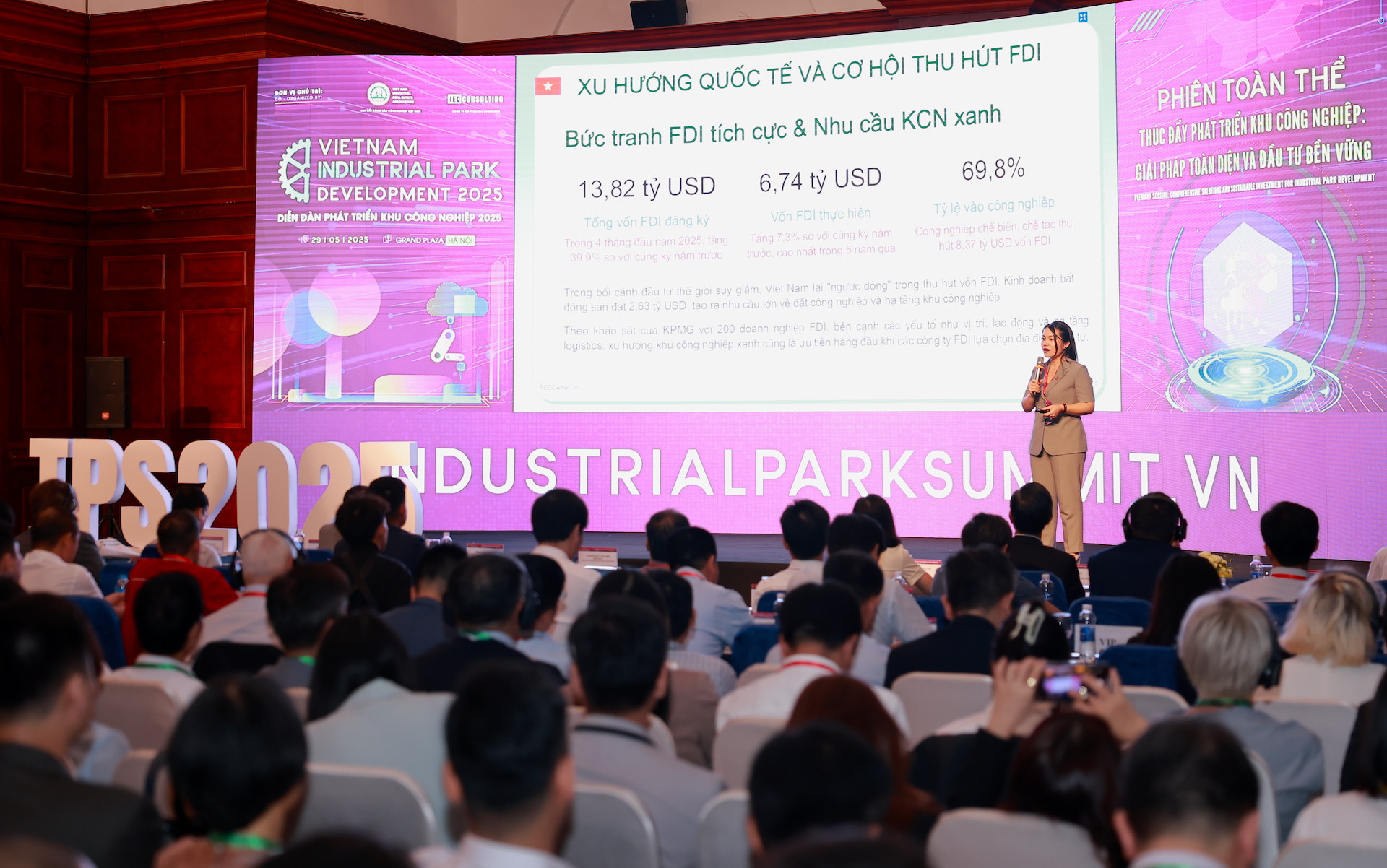Experts have pointed out four major bottlenecks that are causing businesses to have capital locked in underutilized industrial park infrastructure projects, hampering investment efficiency and growth.
Four bottlenecks causing capital stagnation

Speaking at the Vietnam Industrial Park Development Forum 2025 on May 29, Nguyen Thi Dung, Vice President of the Vietnam Industrial Real Estate Association (VIREA), emphasized that with the country entering a new development phase, investing in industrial park infrastructure is not only urgent but also holds great potential.
While global investment flows are showing signs of decline, Vietnam is bucking the trend by strongly attracting foreign direct investment (FDI). Notably, the real estate sector alone attracted USD 2.63 billion, signaling a growing demand for industrial land and supporting infrastructure.
However, Dung identified four key bottlenecks in industrial infrastructure development: complex administrative procedures, lack of long-term and synchronized infrastructure planning, challenges in land clearance and resettlement, and inconsistent infrastructure connectivity.
“These bottlenecks are tying up business capital and undermining investment effectiveness. Land clearance issues delay inspection and final settlements, and in some cases, roads built years ago remain unused because they lack connectivity,” she noted.
Pham Thanh Binh, Director of the Center for Promotion, Information and Investment Support (Northern Region) under the Ministry of Finance’s Foreign Investment Agency, reported that Vietnam currently has 416 industrial parks covering nearly 129,000 hectares. Yet only six have been piloted as eco-industrial parks with UNIDO support in Ninh Binh, Da Nang, Can Tho, and Ho Chi Minh City.
Binh acknowledged that most industrial parks still operate under traditional models with fragmented utility infrastructure, lack of integration with logistics, innovation, and training services, and poor land and energy use efficiency.
A report by the Ministry of Science and Technology shows that only around 15% of enterprises in industrial zones are capable of adopting high technology or participating in global value chains.
Nguyen Van Tien, Vice President of VIREA, noted that Vietnam mostly attracts FDI in labor-intensive, low value-added industries, with limited technology spillover. As a result, advanced models like eco-industrial parks, high-tech zones, and integrated industrial parks remain few. Moreover, the shortage of high-quality labor - particularly in automation and modern production management - is growing increasingly severe.
A necessary model transformation
Given these challenges, Pham Thanh Binh stressed the urgent need to transition to smarter, more sustainable industrial parks - such as eco-parks and parks integrating technology services, green logistics, and innovation hubs - to maintain Vietnam’s competitiveness in attracting high-quality investments.
He argued that industrial zones can no longer operate as isolated entities but must be integrated with urban planning, seaports, expressways, educational institutions, and innovation centers. This calls for a cross-sectoral development approach and stronger inter-provincial cooperation.
He also proposed the development of specific criteria for licensing and operating smart and eco-industrial parks. Additionally, he recommended tax and credit incentives for projects implementing water recycling, waste reuse, and clean energy systems, encouraging circular industrial models.
Regarding industrial real estate prospects, Nguyen Thi Dung shared that under the national master plan to 2030, Vietnam expects to add 221 new projects, expand 74 existing ones, adjust plans for 23 zones, and establish 299 new parks once conditions are met.
She assessed that this large-scale development is creating favorable conditions for businesses in industrial infrastructure development. Currently, demand for land is shifting toward tier-2 provinces and cities due to increasing scarcity in central areas.
Hong Khanh